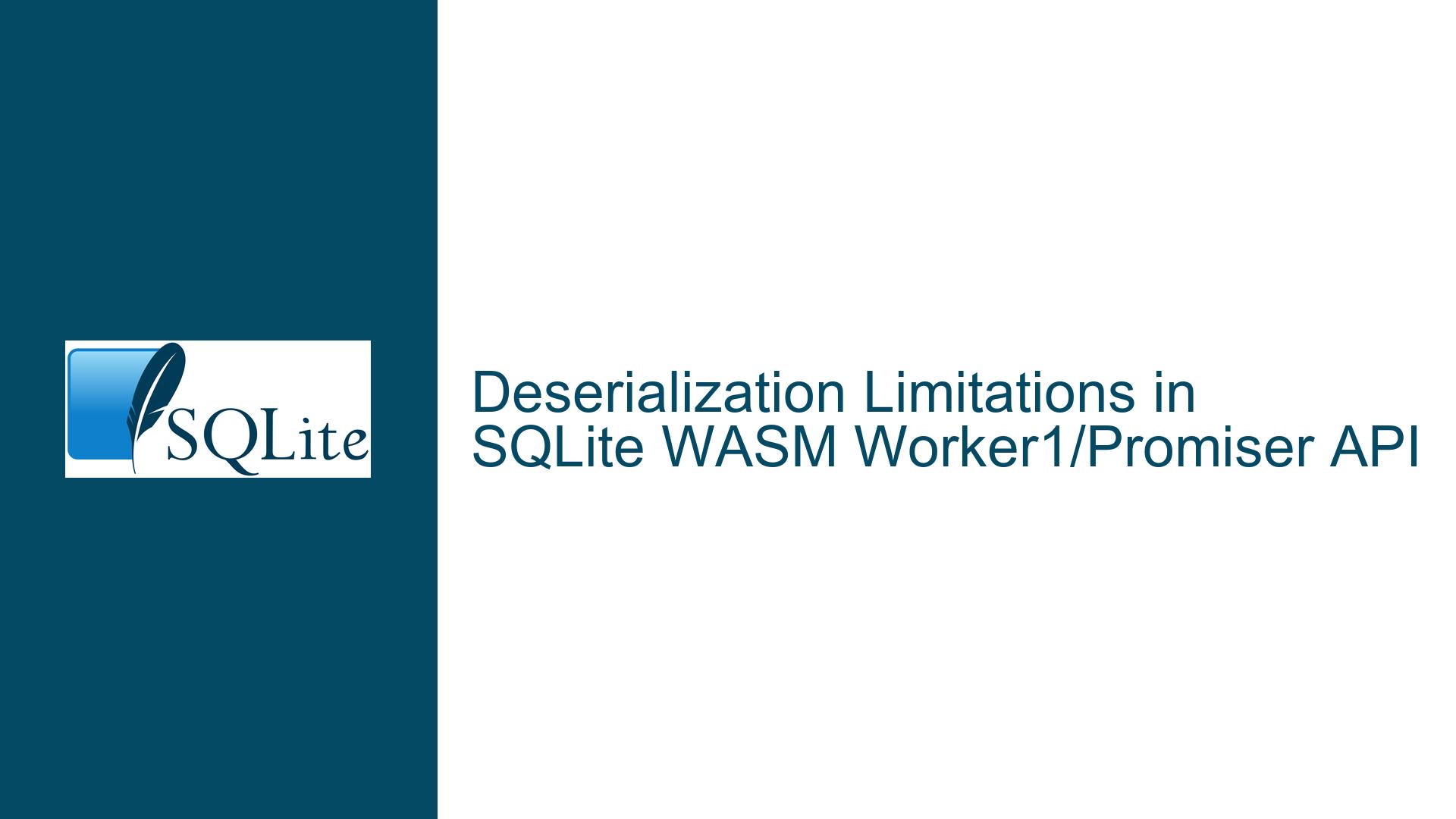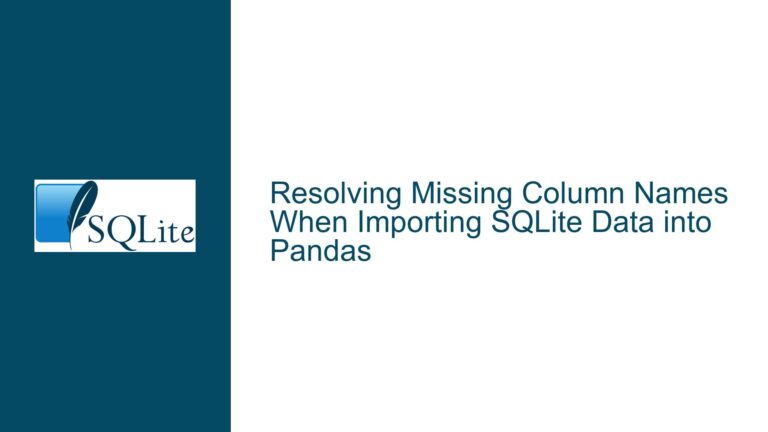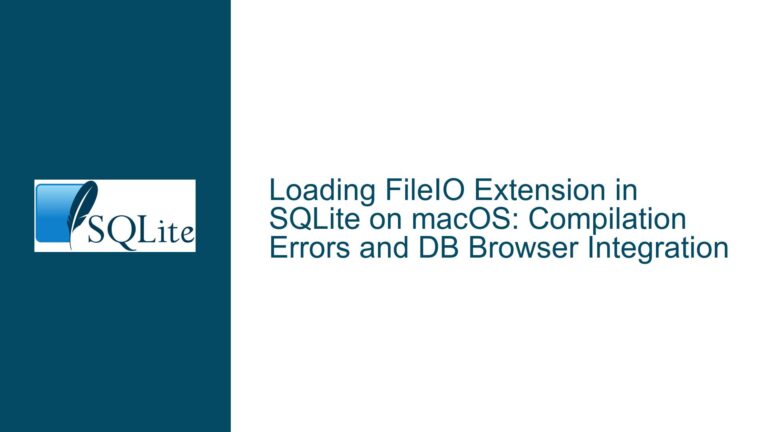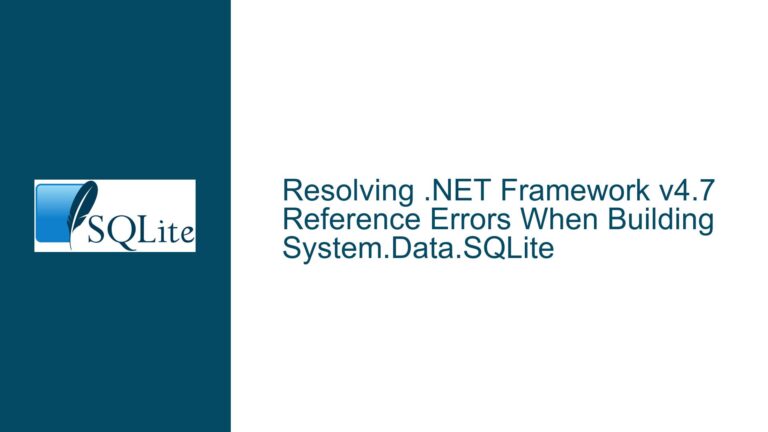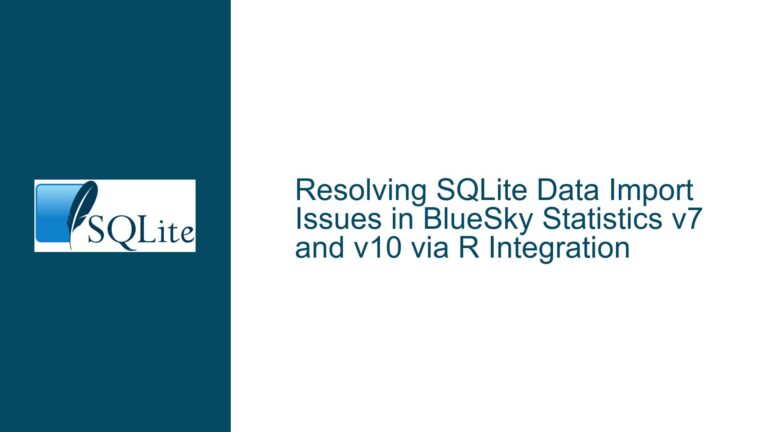Deserialization Limitations in SQLite WASM Worker1/Promiser API
SQLite WASM Deserialization Challenges in Worker Threads
The core issue revolves around the inability to deserialize a byte array back into an SQLite database when using the Worker1/Promiser API in a WebAssembly (WASM) environment. This limitation becomes particularly problematic when developers aim to run SQLite in separate Worker threads to avoid blocking the main UI thread. The Worker1/Promiser API currently supports exporting or serializing in-memory databases but lacks the functionality to import or deserialize data back into a database. This gap hinders the seamless transfer of database states between the client and server, especially in web applications where SQLite is used as a client-side database.
The challenge is compounded by the recommendation to avoid using the Worker1/Promiser API for complex applications due to its inherent limitations. These limitations include the overhead of communication between threads via postMessage() and the reduced performance compared to running SQLite directly in the main thread. The issue is further nuanced by the fact that while running SQLite in a Worker thread is generally preferred for long-running operations, it is not always necessary or optimal, especially for smaller databases or simpler applications.
Developers often face a dilemma: they want to avoid blocking the UI thread but are constrained by the lack of deserialization capabilities in the Worker1/Promiser API. This forces them to either implement custom solutions or reconsider their architecture, potentially leading to suboptimal performance or increased development complexity.
Inter-Thread Communication Overhead and API Limitations
The primary cause of the deserialization issue lies in the design and limitations of the Worker1/Promiser API. The API was initially designed to facilitate basic operations in a Worker thread, but it was not intended to handle complex tasks such as deserialization. The communication between the main thread and the Worker thread is handled via postMessage(), which introduces significant overhead. This overhead is particularly problematic for operations that require frequent data transfer, such as deserializing a large byte array into a database.
Another contributing factor is the recommendation to avoid using the Worker1/Promiser API for anything beyond basic applications. This recommendation stems from the API’s inability to provide full access to SQLite’s functionality. For example, the API does not support certain advanced features or optimizations that are available when SQLite is run directly in the main thread. This limitation makes it difficult to implement efficient deserialization mechanisms within the constraints of the Worker1/Promiser API.
Additionally, the lack of deserialization support in the Worker1/Promiser API forces developers to either implement custom solutions or use alternative approaches. Custom solutions often involve significant development effort and may not be as efficient or reliable as native support. Alternative approaches, such as running SQLite in the main thread, may not be feasible for applications that require long-running operations or need to avoid blocking the UI thread.
The issue is further exacerbated by the fact that the documentation around using SQLite in Worker threads can be ambiguous. While the documentation suggests that it is generally preferred to run SQLite in a Worker thread, it does not provide clear guidance on the limitations or trade-offs involved. This ambiguity can lead to misunderstandings and suboptimal architectural decisions.
Implementing Main Thread SQLite and Optimizing Worker Communication
To address the deserialization issue, developers have several options, each with its own trade-offs. The most straightforward solution is to run SQLite directly in the main thread, avoiding the limitations of the Worker1/Promiser API altogether. This approach provides full access to SQLite’s functionality, including deserialization, and eliminates the overhead of inter-thread communication. However, this solution may not be suitable for applications that require long-running operations or need to avoid blocking the UI thread.
For applications that must use Worker threads, developers can implement custom deserialization mechanisms. This involves writing custom code to handle the deserialization process, which can be complex and time-consuming. Developers need to ensure that the custom solution is efficient and reliable, as any errors or inefficiencies can significantly impact the application’s performance.
Another approach is to optimize the communication between the main thread and the Worker thread. This can be achieved by minimizing the amount of data transferred between threads and using efficient data structures. For example, developers can use shared memory or transferable objects to reduce the overhead of postMessage(). However, this approach requires a deep understanding of the underlying mechanisms and may not be feasible for all applications.
In cases where the Worker1/Promiser API is used, developers can work around the deserialization limitation by serializing and deserializing the database outside of the Worker thread. This involves transferring the serialized data to the main thread, deserializing it there, and then transferring the deserialized data back to the Worker thread. While this approach can work, it introduces additional complexity and may not be as efficient as native deserialization support.
Finally, developers can advocate for the addition of deserialization support in the Worker1/Promiser API. This involves engaging with the SQLite community and contributing to the development of the API. While this approach may take time, it has the potential to provide a long-term solution that benefits the entire community.
In conclusion, the deserialization issue in the SQLite WASM Worker1/Promiser API is a complex problem with multiple potential solutions. Developers must carefully consider their application’s requirements and constraints when choosing the best approach. Whether running SQLite in the main thread, implementing custom deserialization mechanisms, optimizing inter-thread communication, or advocating for API improvements, the key is to balance performance, complexity, and development effort to achieve the best possible outcome.
